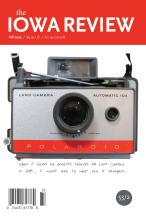
Louis Armand is a visual and literary artist based in the Czech Republic. He is most known for his text-and-sculpture installation The Megaphones of Prague, an ongoing project launched in 1996 that collects and modifies historical megaphones still left in the suburbs of Prague. These instruments of control are sometimes left intact as dictatorial “flowers of evil”; at other times, they are painted or give rise to sculptures and poems inspired by their formal properties. As other more textually-centered creations such as Malice in Underland (2003) and Land Partition (2001) have shown, the driving force behind Armand’s body of work is deeply historical.
Shuttling back and forth between France, Italy, Czechoslovakia, Austria, and Yugoslavia, Clair Obscur also has one foot in the Balkanic war zones of the 1990s and another in World War II. The impression that the novel has a finger stuck in every pie can be disorienting for readers in search of clarity alone. As the title points out, the book’s aesthetic is at least half steeped in obscurity, often making you wonder if the thread of narrative is still in your hands as you wander through the twists and turns of this labyrinthine novelistic experiment.
Added to this geographical and temporal toing and froing are the constant focal shifts that occur at regular intervals, not to mention the transgeneric crossing between novelistic writing and the inserted extracts of the screenplay on which this novel is based. The screenplay mode tends to impact upon the novel writing, making the book often feel more compulsively, rather than compellingly, descriptive. Attempting to detect a distinct plot in Clair Obscur is like trying to savor a drop of orange juice in a pint of water; far better to unmoor yourself from any expectations and let your thoughts drift through the author’s account of European history, narrated in lengthy sequence shots and frozen frames.
The style of Clair Obscur is elegant, though sometimes strenuously intellectual:
The hands of the cosmic clock pursuing an almost human hypothesis: the god in the mirror, the mechanised id, ego, super-ego at the still point of time turning on its axis, wheels-within-wheels, as if that distant and too-close rattling beating tapping were the transmitted dot-dash of an eternal command to doubt, redeem, silence, suicide, the aleph and omerta, repeating and returning, world without end.
As this passage shows, the reader is often indirectly reminded of the fact that Louis Armand is a polyglot who lectures at the Philosophy Faculty of Charles University in Prague and that he is also the author of seven collections of poetry. This is a poet’s novel, when it is not a filmmaker’s or a painter’s, and should be enjoyed as a multimedia, multilinguistic experience: “Slow and ponderous, like cast shadows darkening the membrane of the eyelid shut tight over the eye: deep burgundy, zinc, green. Touché par la lumière.”
Erik Martiny is a reviewer for The London Magazine and the Times Literary Supplement. He teaches in Paris Sciences et Lettres and the International School of St. Germain en Laye.
Clair Obscur
Louis Armand
Equus Press, 2011
€ 8.00 paperback, ISBN: 978-80-260-0112-6

